In the global effort to combat climate change and build a more sustainable future, a silent but powerful revolution is taking place in the construction industry. The traditional approach to building, which has long treated structures as mere energy consumers, is being replaced by a new, holistic philosophy: the Net-Zero Building. These are not just energy-efficient structures; they are buildings designed to produce as much energy as they consume over the course of a year, effectively neutralizing their environmental impact. Once a niche concept reserved for pioneering architects and eco-conscious clients, net-zero is rapidly evolving from an aspirational goal into a pragmatic, mainstream standard. This seismic shift is being driven by a confluence of technological innovation, increasingly stringent regulations, and a growing understanding of the long-term economic and environmental benefits. This comprehensive article will explore the fundamental principles of net-zero building, detail the key strategies and technologies that make them possible, and examine the economic, societal, and environmental imperatives that are making them the de facto standard for the future of construction.
The Core of the Net-Zero Concept

The term “net-zero” can be applied in several contexts, and it’s crucial to distinguish between them to fully grasp the scope of this movement. While they are often used interchangeably, each has a specific focus.
A. Net-Zero Energy: This is the most common and widely recognized definition. A net-zero energy building (NZEB) is one that, on an annual basis, generates as much renewable energy on-site as it consumes. This balance is typically achieved by dramatically reducing the building’s energy demand first and then offsetting the remaining consumption with renewable sources, such as solar panels. The building may still draw power from the grid during peak usage times, but it will export an equal amount of power back to the grid at other times, achieving a net-zero balance over a 12-month period.
B. Net-Zero Carbon: This is a broader, more ambitious goal. A net-zero carbon building addresses both operational carbon (the emissions from energy used to run the building) and embodied carbon (the emissions from the manufacturing, transport, and construction of building materials). To be net-zero carbon, the building must be highly energy-efficient, powered by renewables, and must also offset the carbon emissions from its construction. This often involves using sustainable, low-carbon materials or purchasing carbon offsets.
C. Net-Zero Water: A net-zero water building is a structure that consumes only as much water as it collects, reuses, and recycles on-site. This includes rainwater harvesting, graywater recycling for non-potable uses like irrigation and flushing toilets, and the use of efficient fixtures. Achieving this requires a comprehensive water management system that minimizes usage and maximizes recycling.
For the purposes of this discussion, the primary focus is on Net-Zero Energy Buildings, as this is the metric that is most rapidly becoming a standard across the industry. The other forms of net-zero represent the next evolution of this movement, aiming for a truly regenerative and holistic approach to building design.
The Pillars of Net-Zero Construction
Achieving a net-zero energy balance is not a single, simple solution but rather a multi-pronged strategy. It is an integrated design process that prioritizes efficiency and a holistic approach from the very beginning of a project. The process can be broken down into a series of critical steps:
A. High-Performance Building Envelope: The first and most important step is to “seal the box.” The building envelope—the walls, roof, foundation, windows, and doors—is the primary barrier between the indoor and outdoor environments. A high-performance envelope is airtight and heavily insulated to minimize heat gain in the summer and heat loss in the winter. This is achieved through meticulous air sealing to prevent drafts, using advanced insulation materials, and installing high-performance windows with multiple panes and low-emissivity (Low-E) coatings. An effective building envelope can reduce a building’s heating and cooling load by over 50%, making all other efficiency measures much more effective.
B. Passive Design Strategies: Before any technology is installed, the building’s design itself can do a great deal of the work. Passive design is the art and science of using a building’s orientation, site, and materials to manage its climate without mechanical systems. This includes orienting the building to maximize solar gain in the winter and minimize it in the summer, strategic placement of windows for natural light and cross-ventilation, and using thermal mass materials like concrete or stone to absorb and release heat slowly. Shading devices, such as awnings or strategically planted deciduous trees, are also key to blocking the sun in the summer while allowing it to warm the building in the winter.
C. Highly Efficient Systems and Appliances: Once the building envelope is optimized, the next step is to install the most efficient mechanical systems and appliances available. This includes:
- HVAC (Heating, Ventilation, and Air Conditioning): High-efficiency heat pumps, which can both heat and cool a building, are a cornerstone of net-zero design. They are far more efficient than traditional furnaces and air conditioners.
- Lighting: Replacing old incandescent bulbs with modern LED lighting can reduce electricity consumption for lighting by up to 80%.
- Appliances: Choosing Energy Star-rated appliances, from refrigerators to washing machines, is a simple but effective way to minimize energy usage.
- Water Heating: High-efficiency heat pump water heaters can drastically cut the energy used to heat water, a significant energy consumer in most buildings.
D. On-site Renewable Energy Generation: After all possible efficiency measures have been implemented, the remaining energy demand must be met with on-site renewable energy. The most common and scalable solution for buildings is solar photovoltaics (PV). Solar panels installed on the roof or integrated into the building facade can generate electricity to power the entire structure. The size of the solar array is calculated based on the building’s projected energy needs. In some cases, small-scale wind turbines or geothermal energy systems may also be used, depending on the building’s location and available resources.
E. Smart Building Technology and Monitoring: The final piece of the puzzle is a sophisticated building management system. Smart thermostats, occupancy sensors, and automated lighting controls can fine-tune a building’s energy usage in real time. These systems provide building owners and occupants with detailed data on energy consumption and production, allowing them to make informed decisions and further optimize the building’s performance. This continuous feedback loop ensures the net-zero goal is not just a design target but a consistently maintained reality.
The Economic and Environmental Imperative
The push for net-zero buildings is not simply a feel-good movement; it is a direct response to urgent economic and environmental pressures.
A. Economic Benefits: The most immediate and tangible benefit for a building owner is a drastic reduction, or complete elimination, of energy bills. While the initial construction cost of a net-zero building may be slightly higher (typically 5-10% more), this premium is often recouped in a matter of years through lower operational expenses. Furthermore, net-zero buildings often command higher property values and have a more attractive appeal to tenants and buyers. This is particularly true for commercial properties, where companies are increasingly seeking to reduce their own carbon footprint and are willing to pay a premium for a sustainable office space. Government incentives, tax credits, and rebates for energy-efficient construction and solar panel installation further improve the financial case.
B. Environmental Impact: The building sector is a major contributor to global greenhouse gas emissions, accounting for nearly 40% of the world’s energy-related carbon emissions. The widespread adoption of net-zero building standards would have a monumental impact on this number. By drastically reducing energy demand and shifting the remaining load to clean, renewable sources, net-zero buildings directly tackle a primary driver of climate change. They also reduce the strain on aging electrical grids and improve air quality by decreasing the need for fossil fuel-based power generation.
C. Policy and Regulatory Drivers: Governments and municipalities around the world are increasingly mandating net-zero standards for new construction. Jurisdictions in places like California, the European Union, and Canada have implemented building codes that require all new buildings to be net-zero or “net-zero ready” within a few years. These policies, combined with public-private partnerships and financial incentives, are creating a regulatory landscape where net-zero is not just an option but a requirement. This push from the top is accelerating the industry’s transition and making net-zero design a standard practice for architects and developers.
The Path to Mainstream Adoption
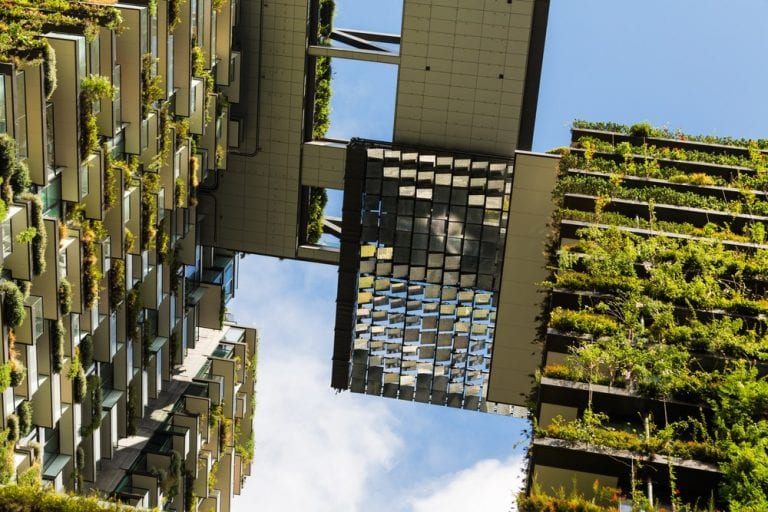
The journey of net-zero from a niche concept to a mainstream standard has been paved by innovation and persistent effort. Early projects were often custom, high-cost experiments. Today, the process is far more streamlined and cost-effective.
A. Technological Advancements: The cost of solar panels has plummeted by over 80% in the last decade, making on-site renewable energy financially accessible to a much broader market. Advances in battery storage are also making it possible for buildings to store excess power generated during the day for use at night, further increasing energy independence. At the same time, the performance of insulation materials, windows, and high-efficiency HVAC systems has improved dramatically, driving down the energy demand of buildings to unprecedented levels.
B. Scaling the Supply Chain: As the demand for net-zero materials and technologies has grown, the supply chain has matured. There are now a wide variety of readily available, high-performance building products, from advanced windows to pre-fabricated insulated panels. This increased availability and competition have helped to lower costs and streamline the construction process, making it easier for builders to incorporate these elements into their projects.
C. Training and Education: There is a growing recognition of the need for a skilled workforce capable of designing, building, and operating net-zero buildings. Universities, trade schools, and professional organizations are now offering specialized training in building science, passive design, and renewable energy installation. This focus on education is creating a new generation of professionals who view net-zero as the standard, not the exception.
Overcoming the Hurdles
Despite the overwhelming benefits, the transition to net-zero is not without its challenges. Addressing these hurdles is essential for the widespread adoption of this standard.
A. Initial Cost Barrier: The most common objection is the initial cost premium. While the long-term savings are clear, the upfront investment can be a deterrent, particularly for developers operating on tight margins. However, innovative financing models, such as green loans and power purchase agreements for solar, are helping to mitigate this.
B. Lack of Uniform Standards: The lack of a single, universally adopted net-zero standard can create confusion. Different organizations and regions have their own certifications and requirements, which can make it difficult for the industry to align on best practices. Efforts by organizations like the International Living Future Institute and the U.S. Green Building Council are helping to create a more cohesive framework.
C. Aesthetics and Design Constraints: Some designers and building owners worry that net-zero design can impose aesthetic constraints, such as large roof arrays or deep-set windows for shading. However, modern architecture has embraced these challenges, using them as opportunities for creative expression. Solar panels can now be integrated into facades and roofs in an aesthetically pleasing manner, and passive design elements can become beautiful, defining features of a building.
D. Performance Gap: A “performance gap” can occur when a building is designed to be net-zero but fails to achieve its target in practice. This can be due to poor construction quality, sub-optimal operation by occupants, or a failure to properly commission and monitor the building’s systems. The solution lies in rigorous quality control during construction, detailed occupant education, and continuous performance monitoring to ensure the building operates as intended.
The Future of Net-Zero
As net-zero becomes the new standard, the most forward-thinking architects and engineers are already looking ahead to the next frontier of sustainable design.
A. Net-Positive Buildings: The next logical step is to move beyond mere neutrality. A net-positive or “living” building generates more energy than it consumes, purifies its own water, and creates a positive impact on the health of its occupants and the surrounding ecosystem. These buildings serve as models for truly regenerative design.
B. Regenerative Design: This is a holistic philosophy that seeks to create buildings and communities that are not just sustainable but actively restorative. Regenerative design aims to improve the health of the entire system—environmental, social, and economic—in which a building is situated. This involves everything from using local, responsibly sourced materials to creating habitats for local wildlife and fostering a strong sense of community.
C. The Circular Economy: The future of construction will be increasingly tied to the principles of a circular economy. This means designing buildings for disassembly, using materials that can be easily recycled or repurposed at the end of their life, and minimizing waste throughout the entire building process. It’s a move away from the linear “take-make-dispose” model and towards a closed-loop system where resources are continuously reused.
Conclusion
The transition to net-zero buildings is a monumental undertaking, but it is one that the industry is embracing with innovation and determination. As the technologies mature, the costs decrease, and the regulatory environment shifts, net-zero will cease to be a niche trend and will become the standard by which all new buildings are judged. This shift will not only transform our built environment but will also play a critical role in securing a sustainable, resilient, and prosperous future for generations to come.


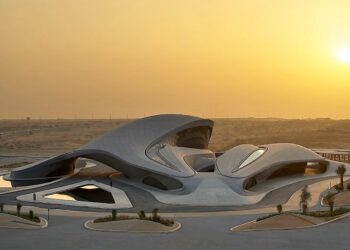
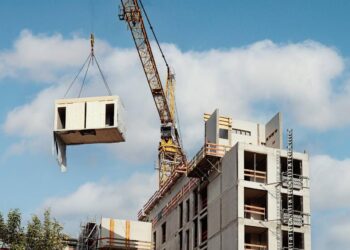
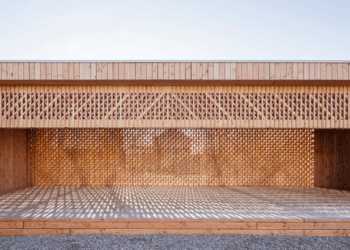
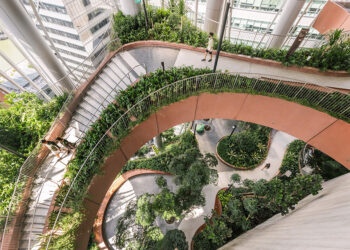



Discussion about this post